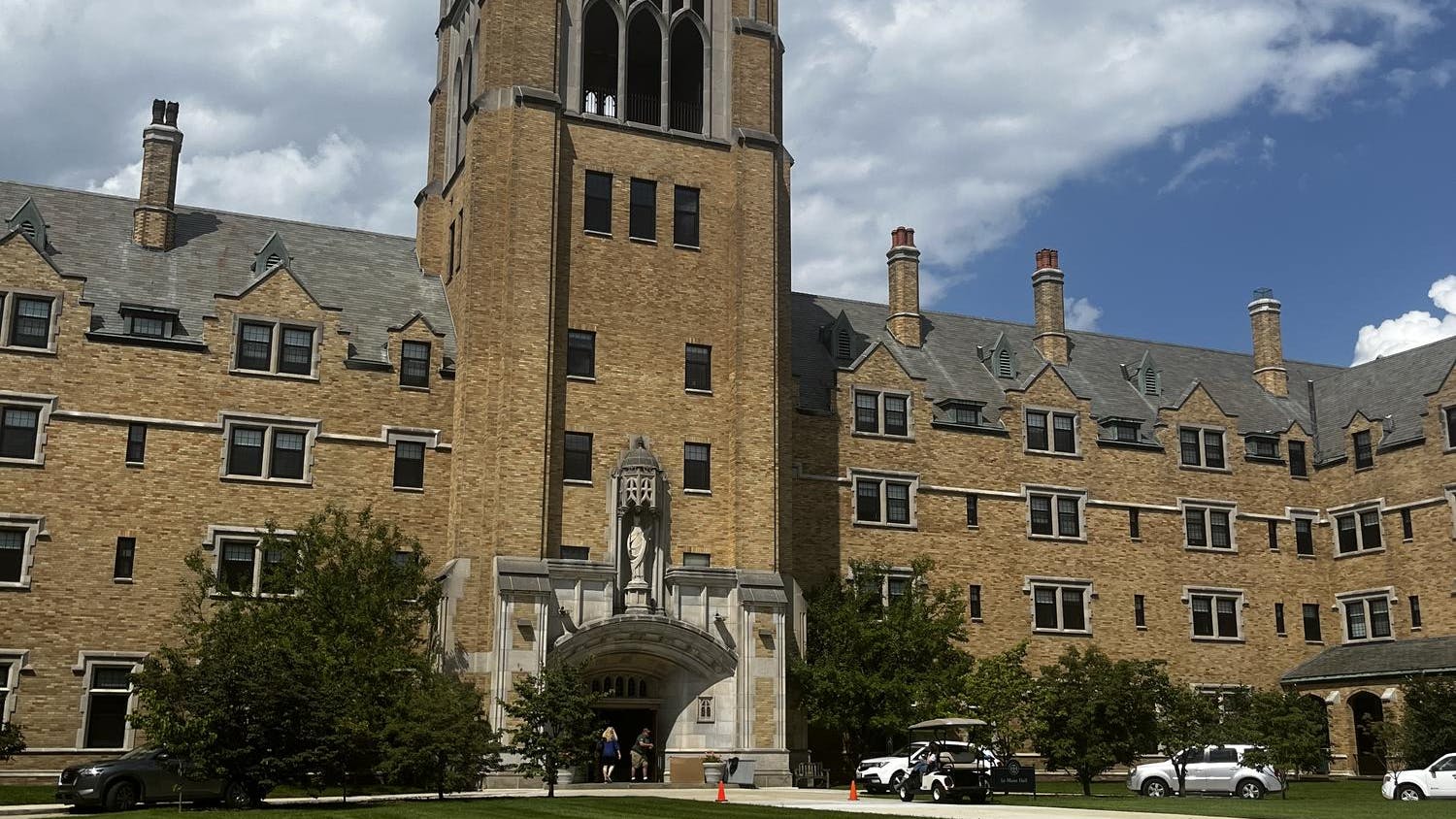Dervis Can Vural, postdoctoral fellow in the school of engineering and applied sciences at Harvard University, considered the nature of aging and death in the lecture “Statistical Mechanics of Aging and Death,” held in Nieuwland Science Hall on Wednesday.
According to the physics department website, Vural said the purpose of his work is to better understand why so many organisms follow a similar trajectory of aging and death.
“Nearly every complex organism experiences a life-long deterioration followed by a catastrophic collapse at the end,” he said. “Furthermore, the statistical characteristics of the collapse are remarkably similar for a diverse range of organisms ranging from worms to mammals.”
Vural said his hypothesis for why humans and other organisms age is based on evolution. For example, natural genetic mutation may lead to the development of disadvantageous traits, he said. Despite being potentially harmful, these traits persist in the organism due to the presence of positive traits combating the effects of natural selection. The term for this process is neutral constructive mutation.
“We age because we have a long neutral constructive evolutionary history,” he said.
Vural said an example of neutral constructive mutation is when a bacterium, born without the ability to make a certain digestive enzyme, nonetheless survives since other bacteria around it secrete that enzyme as they collectively digest a given food source.
Three conclusions were reached based on his statistical studies of aging and death, Vural said. The first conclusion is that aging is a universal phenomenon for humans and other complex organisms.
“Aging is inevitable for any organism that has evolved long enough,” he said. “Aging is the price you pay for being multicellular. We can compose symphonies, we can ride bikes, we can eat pizza. The price you pay for doing all that is aging.”
Vural said the second conclusion is that aging applies to all finite organisms.
“Aging is a finite size effect,” he said. “This means you don’t see [aging] in very tiny systems and in infinite systems you see something very different. The actual characteristics of aging you see in finite systems.”
The third conclusion is the possibility of attaining, with profound difficulty, immortality, Vural said.
“Immortality is possible, but very expensive,” he said. “You don’t gain much by added repair for a long time.”
Vural said his study fits within the broader principles of many-body physics, which is an area of physics that examines the collective behavior of interacting entities.
Vural said he modeled networks of interdependent “nodes” subject to damage and repair and found that the system inevitably crashed over time as each node died either due to its own probability of death over time or the death of an inter-dependent node.
The consistency in the time it took such systems to crash, Vural said, made it possible to estimate maximum lifespan based on initial factors. He said such theoretical predictions closely matched the observations in experiments with animal populations, from fruit flies to mice.
Vural said his work has implications for destroying bacteria populations if scientists use neutral constructive evolution to weaken potentially resistant bacteria within the population. The science may, over time, also apply to cancer treatments as scientists learn how to target specific cells within a system, he said.
“This is where mad science begins,” Vural said.













